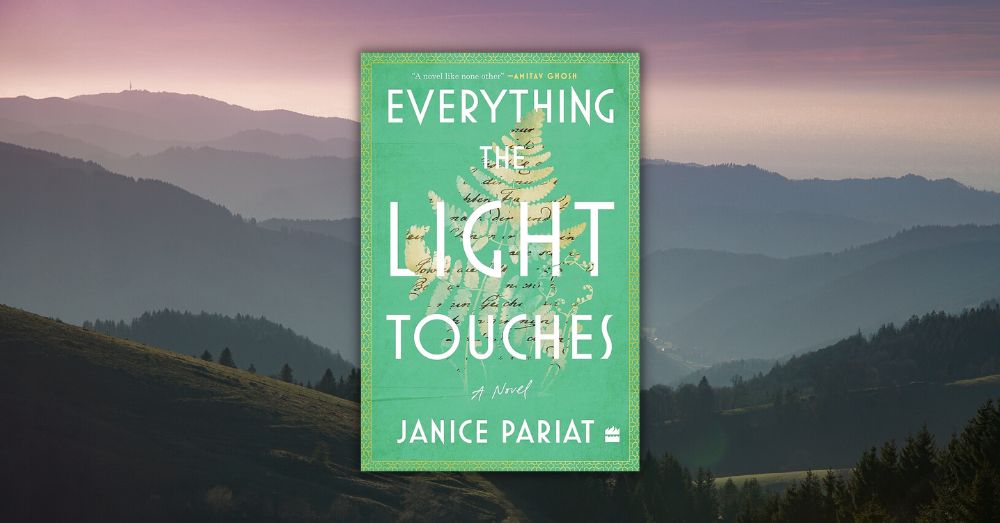Janice Pariat’s ‘Everything the Light Touches’ celebrates journeys that transport you home and help rediscover purpose. While some books are unputdownable, there are some books that you must put down to slowly savor, introspect, and let that feeling wash over you before you pick it up again.
‘Everything the Light Touches’ falls in the latter category. It is by no means an easy read; the concepts explored are complex but very vivid and visual. The book acknowledges the beauty of nature and in particular that of the plant world while pondering over the philosophy of unity in multiplicity.
The story is narrated by four different narrators and spans over 490 pages. Four parallel stories in different periods and different places unfold in palindromic fashion – Shai, Evelyn, Johann, Carl, and then Johann, Evelyn, and Shai. At first, they seem unconnected, but a common thread binds them all.
Shai’s story is set in contemporary times, while the others are historical fiction. Shai, a native of Shillong, explores rural Meghalaya, grasping what land and tradition mean to the indigenous population. In 1911, Evie, a British botanist influenced by the Goethean interpretation of botany, travels to India by ship and embarks on an adventure in Assam. Johann’s (Goethe’s) story is a historical fiction based on his years in Italy that shaped his understanding of plants. Carl’s section is in verse and is based on Carl Linnaeus’s documented exploration of the Laplands (Sweden).
The writing invokes wanderlust in the reader – be it the alluring misty hills of Meghalaya, the beauty of Rome, the mysterious Himalayan mountains, or the unexplored vastness of the Laplands. At the heart of it is the comparison of the Goethean thought of a single archetype versus Linnaeus’s taxonomical approach of classifying and grouping everything in the plant world. This philosophy is projected to journeys, home, roots, life, and identity.
My favorite section is Shai’s – it sheds insight into the Khasi customs and traditions and captures the breathtaking beauty of the North-east. The author also includes a political commentary on illegal uranium mining and the steps taken by the government to support the locals and their on-ground realities.
My only grouse is the extensive use of scientific terms. At times it felt like a botany lesson. The sections on Carl and Johann carry too many details of plant parts and scientific names which may mar the reader’s experience, especially if they are from a non-science background.
The author’s poetic words flow like a stream. The book is packed with metaphors and immersive imagery. Themes that shine include the exploration of the plant world, man’s relationship with nature, and a gentle reminder of the delicate balance that we have disturbed. The light here is symbolic and is referenced in many places. The writing is so beautiful and evocative, especially in parts like these:
“Beneath our feet exists another world, I learn, a network of infinite biological pathways, through which trees share resources, information, nutrients. Some regard it as a competitive system, regulated through self-interest, sanction, and reward. Others believe trees care for one another, and act as guardians, sharing resources, with the healthy supporting the weak. A free market versus a socialist’s dream.”
“That everything you see for the first time you see for the last time because either the view changes, or you do.”
“When you give something back, what you have been given becomes a gift and gifts create continuing relationships.”
This is the kind of book that makes you go for a long walk into the woods and just listen to the babble of the brook, the sound of crickets, or the distant cry of a bird. It makes you want to immerse yourself in nature’s lap. It’s not for everyone, but many parts make it shine. These are the parts you want to go back and read it again like new, because either the either the view changes, or you do.
